The Yang Slinger: LXIII
We all know how to begin a story. We all know how to properly place quotes. We all know the power of transitions. But ending the narrative? That's no joke.
Back in the late 1990s, Mike Vaccaro served as a features writer for the Kansas City Star. He was young and unknown and hungry, and—like most of us in our 20s and early 30s—took every word he wrote incredibly seriously.
Which is why he engaged in semi-regular (and super nerdy) debates with his editor, Mike Fannin, about the importance of the lede vs. the importance of an article’s final lines (aka: The kicker). This was a back-and-forth debate. Vaccaro was steadfastly pro-lede. Fannin was doggedly pro-kicker. Lede. Kicker. Lede. Kicker. Back and forth, like two pickleball players charged up on Red Bull and coke. But ultimately, Fannin seized the day with words of journalistic wisdom Vaccaro (now a sports columnist for the New York Post and one of America’s tremendous scribes) loves to recall.
Said Fannin: “Everyone obsesses about how the lead to a long piece needs to be perfect, and it does. But if you write 80 glorious inches and then your kicker is for shit, that’s worse. Because a bad lead might keep a reader away, which is bad. But if that reader invests 15 or 20 minutes and at the end you throw up an air ball kicker … that’s unforgivable because now you’ve wasted his time.”
Fannin was dead-on. To experience a great story—a legitimately great story—is to walk away with a “Wow,” with a “Holy shit!” with a pit in your stomach or rays of sunshine shooting through your pores. It’s to feel something. Profound. Urgent. Painful. Biting. Jarring. Lovely. Euphoric.
And, with some exception, those emotions are best captured with an epic kicker.
For me, unfortunately, there aren’t a ton of stop-the-presses kickers that come to mind. We all have strengths and we all have weaknesses, and my stories tend to be a bit top heavy, with far too many petering out as the words pass.
However, there was one magical moment when my kicker, eh, kicked ass—and it remains one of the favorite things I’ve written. Back in 2009, after a couple of NFL players (Marquis Cooper and Corey Smith) died in a boating accident, I pitched a rapid-fire piece to Sports Illustrated about a similar tragedy from 26 years earlier. On Oct. 30, 1983, three Red Sox prospects—in Florida for Instructional League—chartered a boat off the Atlantic Ocean, then went missing after the vessel capsized. John Mitchell and Scott Skripko, both pitchers, survived by grasping floating items for more than 20 hours. Tony Latham, an outfielder out of Virginia, drowned.
I’d known John from reporting my first book, “The Bad Guys Won!” (he had pitched a few games for the 1986 Mets), so I reached out to see if he’d discuss the boating nightmare. He was wonderful, and as we chatted and chatted and chatted he mentioned, in passing, that he named his son, 13 at the time, after Latham—a mid-level outfield prospect and a man he barely knew.
And even though that was a small detail, it hit me hard for myriad reasons. The haunting nature of it all. The carrying on of a name. Two dudes from opposite walks of life. I felt all sorts of feels.
And this is how I ended it …
Enough babbling—let’s talk kickers.
Back when I was a kid, worshiping at the altar of Sports Illustrated, the magazine was known for great writing, great images, great packages, great … everything.
But, in hindsight, the kickers sorta blew.
A far-too-typical typical Sports Illustrated story would begin with a lede that took you inside an athlete’s home. So, for the sake of this substack entry, let’s say it’s a piece on Cardinals first baseman Keith Hernandez. And the writer notes that Hernandez smokes one cigarette after another cigarette. He decides the lede should focus on Hernandez stubbing out cigs in an ashtray. Like, the scribe is selling the Marlboro narrative hard.
The story continues for 2,000 or so words—we talk to Hernandez’s manager, some teammates. We visit his hometown. We meet his cats, Morris and Boris. We watch him take swings. We watch him study film.
The story is about to end—and then, the kicker …
And, when it comes to Hernandez and baseball, there are no butts about it.
Hell, two seconds ago I went into my closet and pulled out a random Sports Illustrated—this one from Jan. 29, 1979. The first piece I turned to, a profile of DeMatha High basketball coach Morgan Wootten, was written by Larry Keith (an all-time SI great). It began like this …
And ended with this …
Seriously, that’s how it used to go—all the time. And, if I’m being honest, 13-year-old Jeffie Pearlman loved that shit. Ate it up. Early in my career, as an intern in Urbana, Illinois, then as a cub reporter in Nashville, I tried channeling that device all the time.
Lede.
Content.
Kicker that returns to lede.
Then, one day, it hit me: This fucking sucks.
“I think the end or kicker is hugely important,” says John Branch, the phenomenal New York Times writer. “I hate stories that end flat, like a rolling stop. I want an exclamation. The goal is to leave the reader with a reaction. In my mind, it’s a smirk, a knowing laugh, a ‘hmmm.’”
I’ve spoken with a bunch of exceptional writers for this topic, and there are different ways of thinking for different kicker approaches. Let’s break some down …
Thought 1: End with a quote:
So I’ve done this far too many times to count. And, if you’re a writer who’s been around, you’ve likely done this far too many times to count, too. I don’t actually think there’s anything wrong with wrapping a piece with a quotation—as long as the words provide context or purpose or some level of feeling. “I’m not so creative these days,” says Adrienne Lewin, editor-in-chief of Diversity in Action magazine. “So [I’m good with] a nice quote that is both insightful and concludes things.”
A few weeks ago, the New York Times’ Caryn Ganz penned a marvelous profile of Olivia Rodrigo, the pop singer. The article traveled several thousand words before concluding with this …
It works, because Rodrigo’s quote packs a punch and wraps up everything Ganz has been trying to convey. A similar quote-to-end-an article punch was delivered when Bill Rabinowitz of the Columbus Dispatch wrote long on (former) Ohio State quarterback C.J. Stroud in a story headlined, AMID LOSS AND FAMILY HEARTBREAK, OHIO STATE QB C.J. STROUD MATURES INTO MODEL LEADER. Because of a paywall you might not be able to access the work, but the story takes the reader on a journey of Stroud’s development and maturation.
It ends thusly …
“The ending has to be satisfying,” says Rabinowitz. “Maybe it's a great one-liner. Maybe it's just a sentence or two that sums up the piece. A clunky ending always feels like a bad aftertaste. It's the last piece of the puzzle, and second in importance only to the lede because it's often what people remember. There's an art to it, and I'm not always successful. I tend to think that mine can be a bit trite, so I'm extra conscious of avoiding that. I end a lot of those kind of stories with a quote. Some people disagree, but the right quote can be the perfect walk-off.”
Thought 2: Do not end with a quote—ever:
A bunch of years ago, before she became famous and huge and America’s favorite Occidental-educated scribe, Mirin Fader came to me seeking advice. She would ask 8,000 questions per week. About nut graphs and punctuation, about ledes and transitions and coffee shops and Menudo songs.
She also asked about kickers.
“I used to always end with a quote,” Fader recently said. “And then I think you actually told me to practice using my own voice for the kicker (and the early parts of the lede too). Now I’d say 98 percent of the time I end on my voice. You want it to feel like the final chord—but with just enough opening for new possibilities. I never want to feel redundant at that point. If I’m just retelling what I’ve already told, what’s the point?
“You told me it was a challenge you put to me, quote less and use more of your voice. We quote often as young writers because we don’t yet have our own voice or confidence in it. I think pushing myself to end on my voice rather than a quote has really helped me develop more confidence.”
Fader noted this profile of Greg Oden and his post-NBA journey as an example of using her voice, not someone else’s. The story, GREG ODEN’S LONG WALK HOME, is a winding journey of highs and lows, successes and missteps. And it would have been remarkably easy/convenient for Mirin to pull out her best I’m-doing-great Oden quotation and plopping it at the bottom of her Google Doc.
Instead, she went with this …
“It ends on a tone of possibility,” Fader says. “It returns to a motif (the house) but in a new way, so as to not re-tell.”
Truth be told, when I offered Mirin said advice, it was while I was going through a we-can-say-it-better-than-they-can phase. Which I still believe, so it probably wasn’t mere phase. I just have to think a professional writer can come up with sweeter language than someone who’s not a professional writer. Put different—why end an epic Bradley Cooper profile with Cooper’s own meh sentences when Taffy Brodesser-Akner could write—perfectly, succinctly—“His hat was back on by then.”?
Mic drop.
“I’m OK with a quote,” said Ted Spiker, head of the University of Florida’s journalism program. “But I love the micro detail that just leaves you feeling it, that sends you off with just a whispered wow.”
Thought 3: Be creative
There seems to be a thought pattern, especially with young writers, that certain devices need to be employed certain ways at certain times. You lead with X. You end with X. You put X quote after X paragraph to accomplish X. And, truth is, it’s all nonsense. There’s no 100-percent certain way to wrap a story. So be creative and inventive and funky. Ignore any journalism rules, because they’re all bullshit. Go with something new. Go with something old. “I try and think of these stories in a cinematic way, for a practical reason: The visualizing of them as movies helps my brain process how I want them to look and move,” says Yaron Weitzman of Fox Sports. “So I'll think, like, if this were a movie, how would this end. Usually, you have the big culminating event, and then sort of a short unwinding that both drives homes the theme and illustrates how your main character or characters have changed. Any movie-goer would easily recognize these scenes. So in stories I try to do the same. Finish the plot followed by a quick reset.”
“I try everything,” says Vaccaro. “I try the call-back to earlier in the column (I do that a lot). I try to go out with a laugh (maybe a 50-percent success rate). Because you’re not supposed to end a column with a quote, if I get a great quote sometimes I do just that (but it has to be really great). But all these years later I figure I spend twice as much time making sure the kicker is right as opposed to the lead. Maybe that’s a bad division of labor but I still hearken to the spirit of what Fannin told me 25 years ago: reward the reader for taking the time to read you by giving him a good send-off.”
Thought 4: Know your kicker before knowing anything else
ESPN’s Seth Wickersham and I are roughly the same age. We’ve both written for pretty neon places, both have multiple books. He’s more of an NFL guy than I’ll ever be, but we’ve traveled fairly similar paths in this journalism world we both call home.
So it surprised me when Seth—a guy I’ve been reading for years—told me he usually has a kicker idea before most anything else. “If you know your ending before you start writing, you relieve yourself of that burden,” Seth says. “It makes a hard writing process somewhat easier: You know your destination. You can take whatever route you want to get there, whatever side roads or detours, but you know where you’ll end up.
“Endings should be smooth, rolling downhill. You shouldn’t be introducing a lot of new information in them. If you have to explain something in your ending, it means you’ve failed in the words that precede it. Everything should be said by then, and what you want your ending to do is enhance the themes or ideas, in a way that hopefully feels something close to profound.”
I asked Seth for some of his best kickers, and it’s a buffet of melted butter and fresh rolls.
There’s this gem, at the end of a 2010 profile of Deion Sanders …
There’s this gem, at the end of a 2013 profile of the late Bill Walsh …
There’s this gem, a 2018 breakdown of a young Patrick Mahomes …
And what you see, repeatedly, with Seth is a tone/mojo that very few can muster. It’s authoritative with being preachy. It’s the writing equivalent of landing a plane after a 12-hour flight. The imagery narrows and narrows and narrows until—plop!—you are down and the journey is complete.
And that’s why Wickersham always has kick.
Ask Jeff Pearlman a fucking question(s)
Here’s a wacky idea—ask me any journalism question you like, and I’ll try and answer honestly and with the heart-of-a-champion power one can expect from a mediocre substack.
Hit me up in my Twitter DMs, or via e-mail at pearlmanj22@gmail.com or just use the comments section here …
Hey Jeff! This isn't really a journalism question, but I've really been enjoying Winning Time. I have really liked the choice of music throughout. Did you have any say in the tunes? I can really tell there's a lot of thought put in (even in Kareem's acceptance of Coltrane records): It’s all me. One hundred percent of it. Me! Me! Me! Eh, no. I have had zero say in it. The only thing I’ll note is that, way early on, the theme song “My Favorite Mutiny” by Boots Riley, was a holder tune until something better came along. But I looooooove that jam, and expressed myself loudly. Not that it probably made a difference.
Also, The Ringer’s Katie Baker wrote a really cool and informative piece about the opening montage.
A random old article worth revisiting …
Earlier today I thought to myself, “I wonder what Gary Kubiak was doing back 39 years ago.” Thanks to the Denver Post’s Buddy Martin, on Sept. 4, 1984 we know he was doing, well, this …
This week’s college writer photographer you should follow on Twitter …
Grace Sorrells, photographer, University of South Carolina
So I’ve never noted a photographer here, but then I stumbled upon this photograph from a recent article in the Daily Gamecock, South Carolina’s student newspaper …
And it’s just lovely. Beyond lovely. Everything about it, from the dirty arm to the endearing smile to the teammates in the background. It’s the sort of image I’d have expected from Sports Illustrated back in the day.
Only it’s via Sorrells, a college shooter.
One can follow Grace on Twitter here.
Bravo.
Journalism musings for the week …
Musing 1: There are, truly, so few rules one needs to follow to be a journalist. So. Few. Rules. But for some reason, Colorado’s CBS News has decided that its lead sports anchor/reporter, Romi Bean, need not follow any of them. Instead, she is a 100-percent fan of the local teams. That’s her job. Her duty. To be a booster—and only a booster. Reporting? What’s reporting. I, Romi, am here to tell the Broncos and Rockies and Avs and Buffaloes that I love them, and I want them to win, and that they can do no wrong.
Need proof? Check out her Twitter feed. Need greater proof? Here’s Romi posing for a photo with her parents and Deion Sanders—AND FUCKING TWEETING IT OUT WITH, “What an unbelievable blessing! @DeionSanders taking the time out of his busy day and opening his heart to my parents. There is no limit to his kindness. A day we’ll remember forever!”
And my question for Romi is, sincerely: Are you a journalist? Or are you merely a fan of those you cover? Are you a reporter? Or are you a booster? Do you really know there’s no limit to Sanders’ kindness? Like, do you know it? Have you researched him? His past jobs? His past experiences? Ever ask him about his failed high school? What about the people in Jackson, Miss. who depended on him? Those questions leave your lips? Ever? Or is there “no limit” to his kindness because he took a picture with Mom and Dad?
Also, how do you walk away from these exchanges …
… and think, “I sure showed them?” It’s bonkers. I’m sure these teams have openings in their communications departments. If you want to be a fucking fan, apply for them. But stop making people believe this behavior is journalism. Because it’s anything but. Fuck, it’s cheerleading.
PS: You sound Jonestown …
Musing 2: I’m a little late to this, but Steve Harwell, lead singer of Smash Mouth, died somewhat recently. I wouldn’t say I was a huge fan, but to cover baseball in the early 2000s was to hear the song “All Star” every 73 seconds of your life. RIP, Steve.
Musing 3: Really fantastic writing/reporting from ESPN’s Chris Low in MARSHALL, EAST CAROLINA SHARE ENDURING BOND FROM 1970 PLANE CRASH. We’re now 53 years removed from the horrible tragedy, and Low’s work is an important reminder of all that was lost.
Musing 4: I hate, hate, hate that I agree with him, but the Washington Post’s David Ignatius makes very fair and reasonable points in PRESIDENT BIDEN SHOULD NOT RUN AGAIN IN 2024. There are arguments politicians can make in almost any state: The economy will turn around. Gas prices will lower. Civil rights will improve. But age is age, and Biden—who I genuinely admire and respect—is pretty fucking ancient. And that ain’t changing.
Musing 5: David Von Drehle echoed the take. Again—I can’t argue.
Musing 6: The tremendous Dante Stewart hit the pages of the Washington Post to express his love for coffee shops. I am with it, 100 percent.
Musing 7: Jim Trotter is a terrific journalist, and he’s suing the NFL for racial discrimination. I, for one, both believe and support him. Jim worked for the NFL Network for five years, but was kicked to the curb after the Super Bowl, during which he asked asked Commissioner Roger Goodell at a news conference about the network’s lack of Black executives. “The NFL has claimed it wants to be held accountable regarding diversity, equity and inclusion,” Trotter said in a statement distributed by his lawyers at Wigdor LLP. “I tried to do so, and it cost me my job. I’m filing this lawsuit because I can’t complain about things that are wrong if I’m unwilling to fight for what is right.”
Musing 8: I’m actually a pretty big fan of Doja Cat’s music, but—post-dumping all over her fans and making them feel like collective turds—her latest single, “Paint the Town Red” is … um … eh … ah … is, mmm … not the best. Lesson: Don’t shit atop those who support you.
Musing 9: Weird look from Tennessee Conservative News here: When did encouraging people to vote become a bad thing?
Musing 10: Huge, enormous, gigantic congrats to my pal Jonathan Eig, whose spectacular, “King: A Life” has made the National Book Awards long list.
Musing 11: Sometimes social media delivers.
Musing 12: New Two Writers Slinging Yang stars Steve Schmidt, the longtime campaign guru and Trump basher supreme.





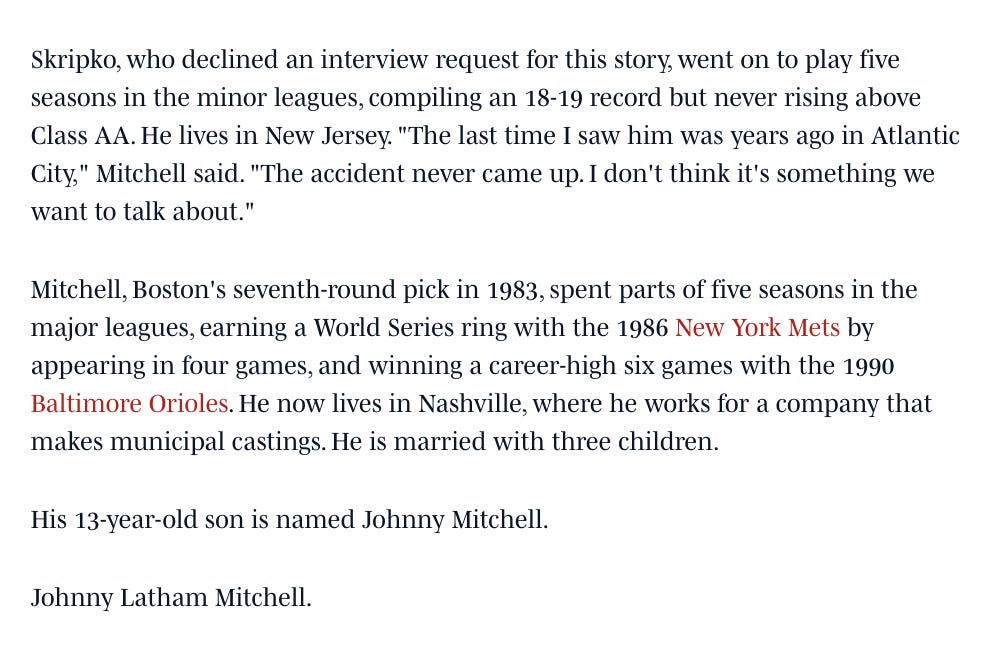



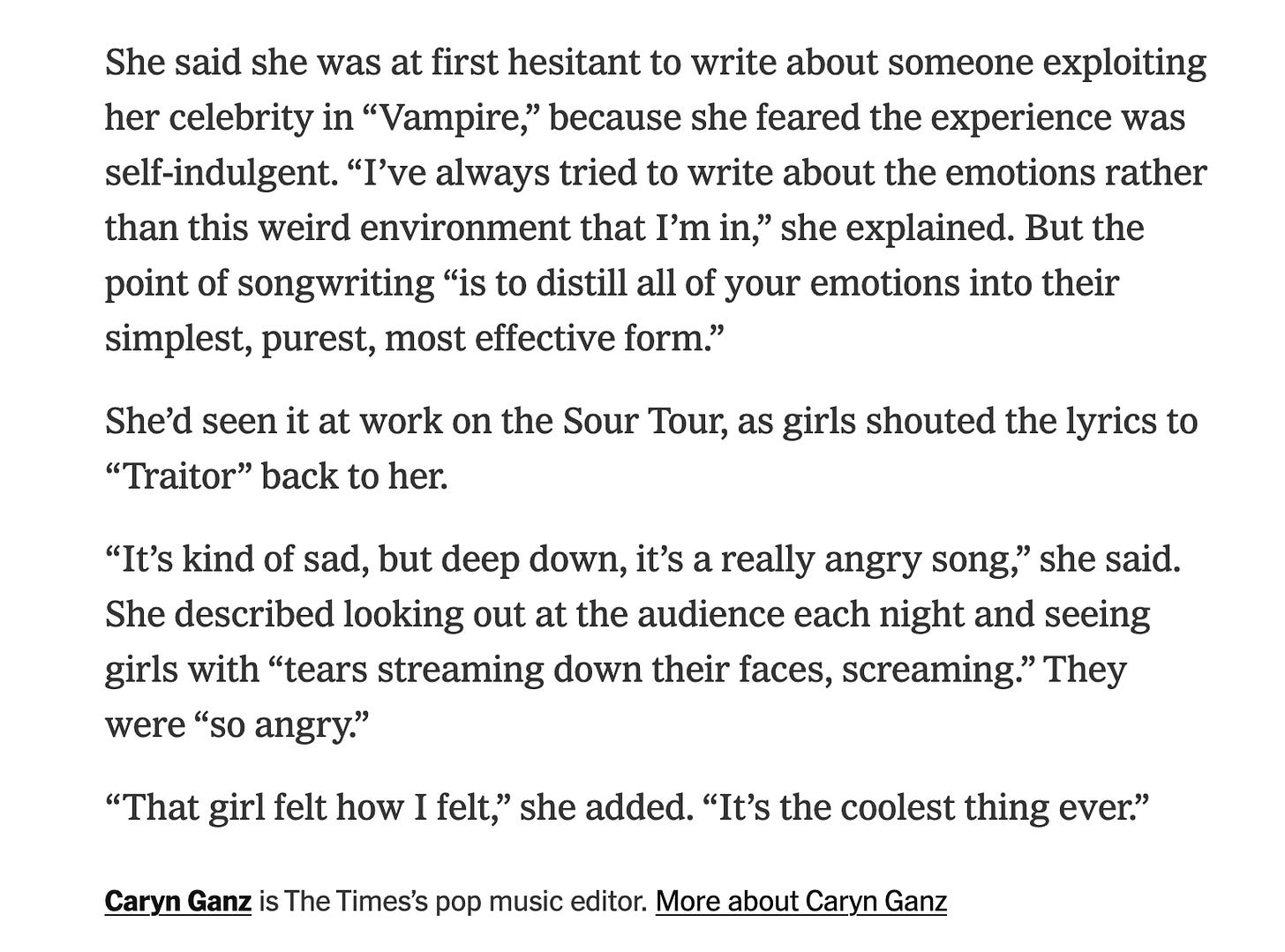
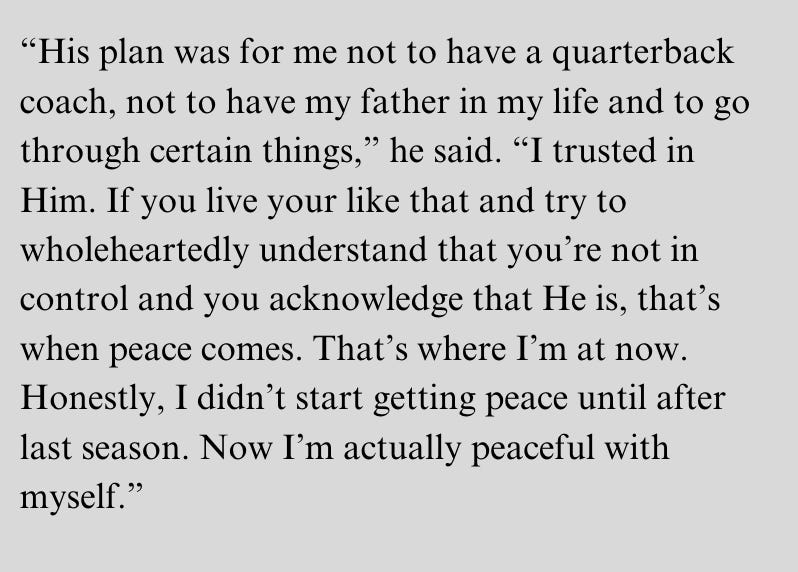
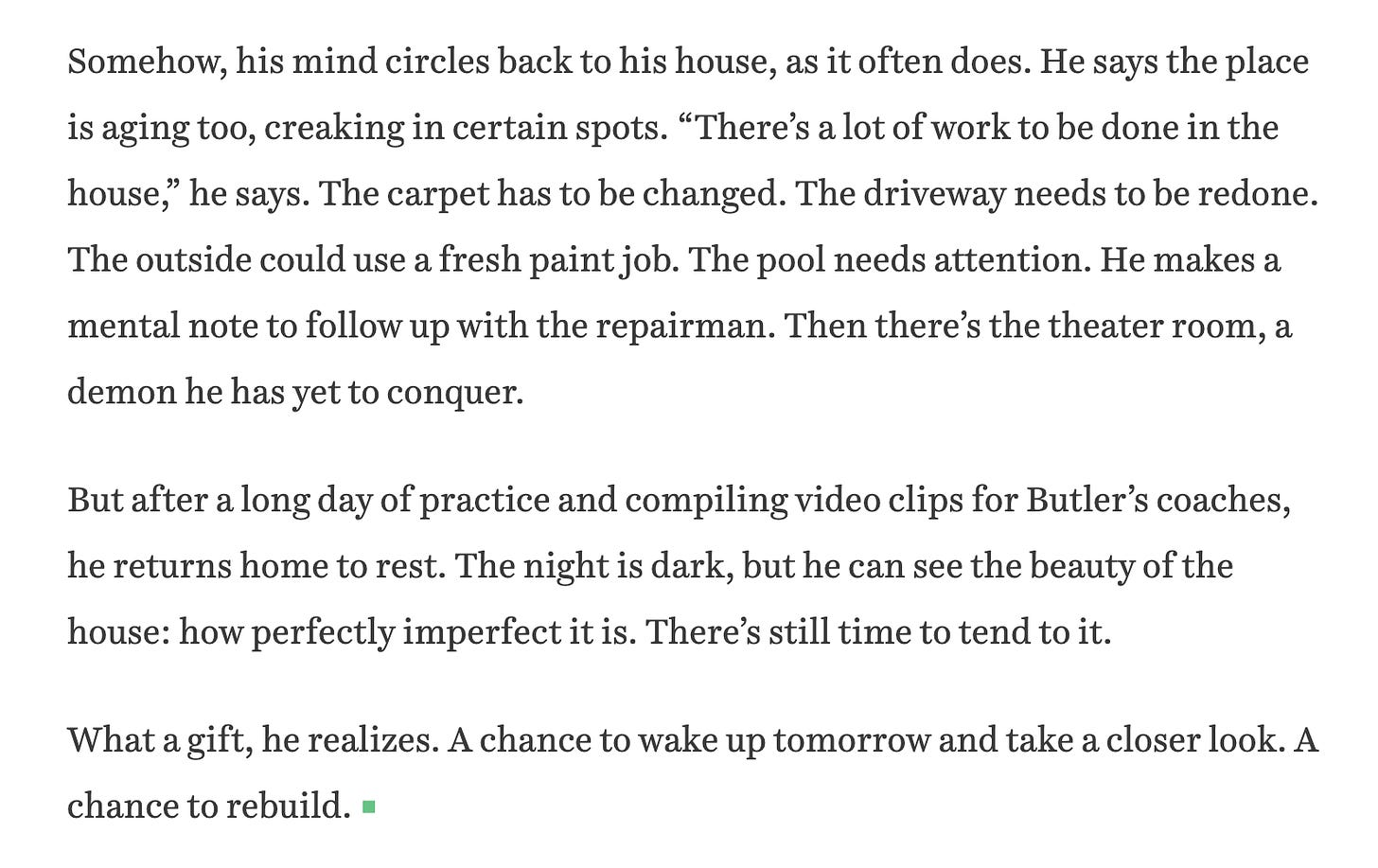
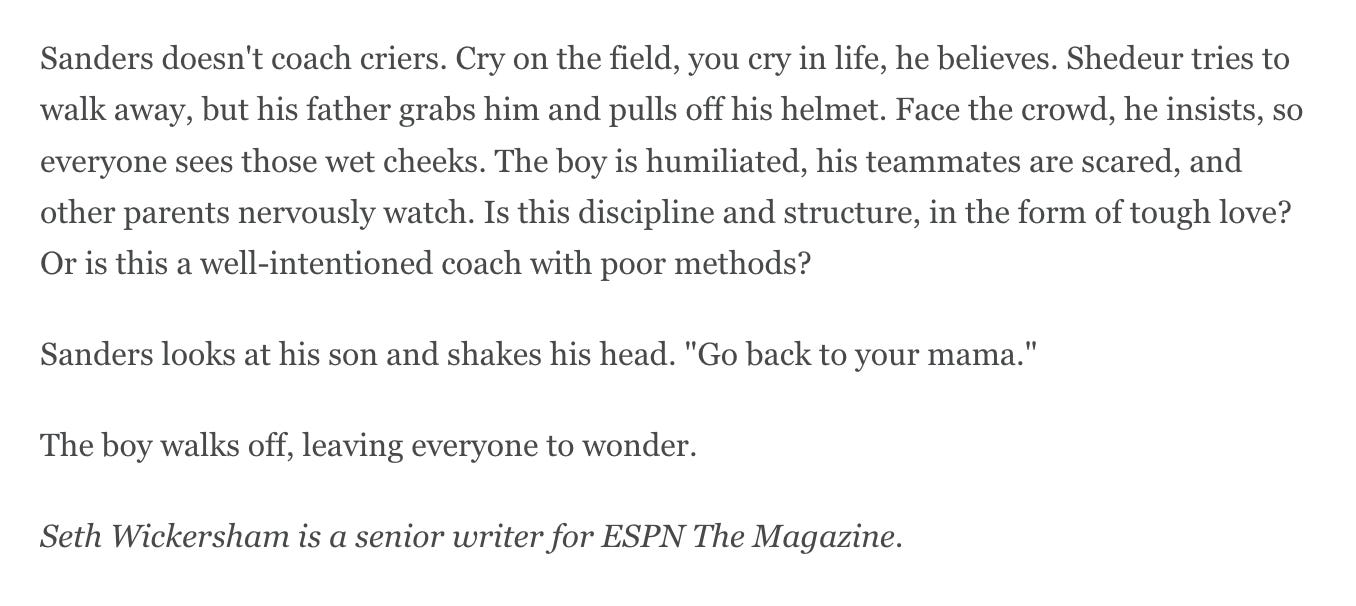
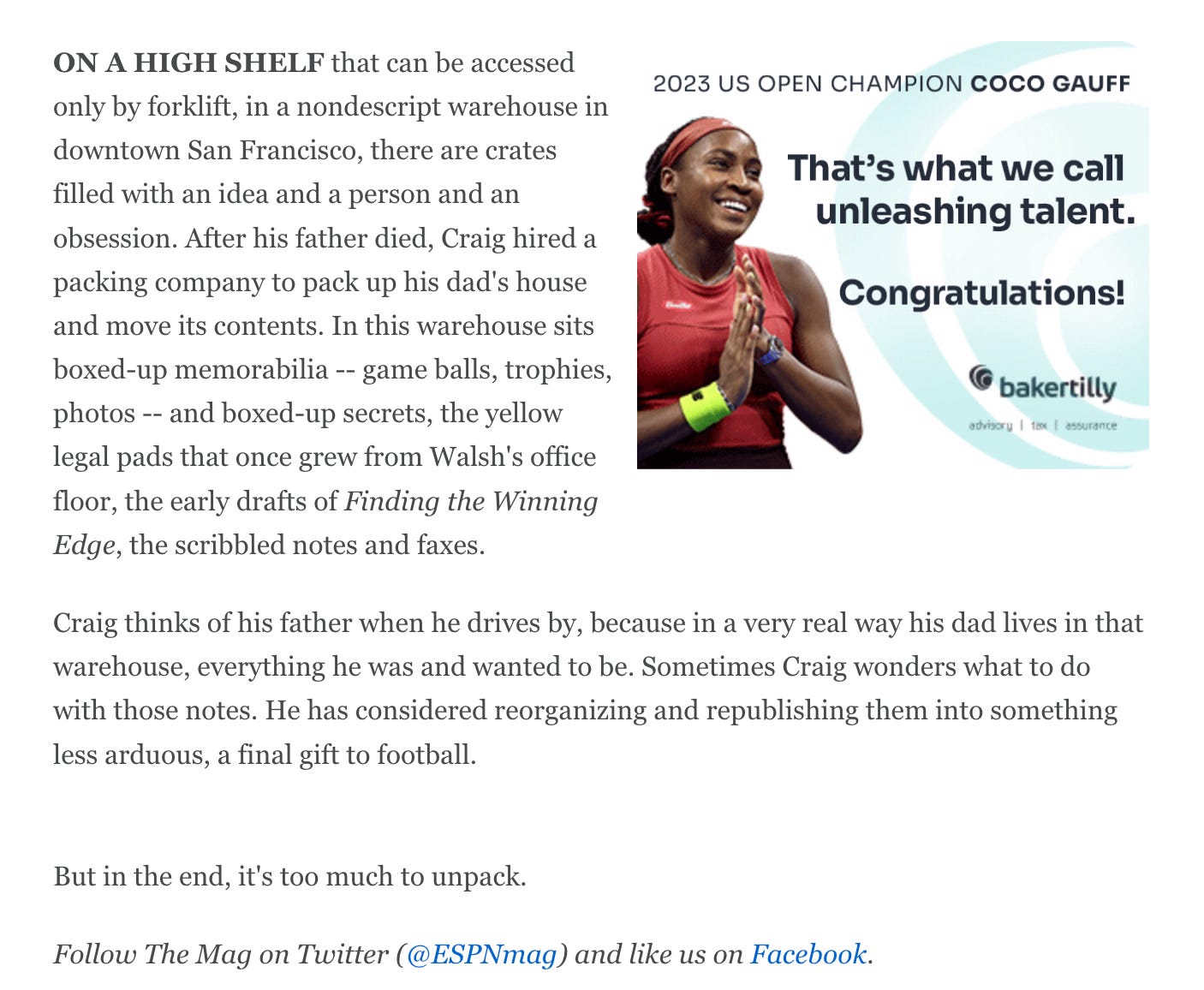
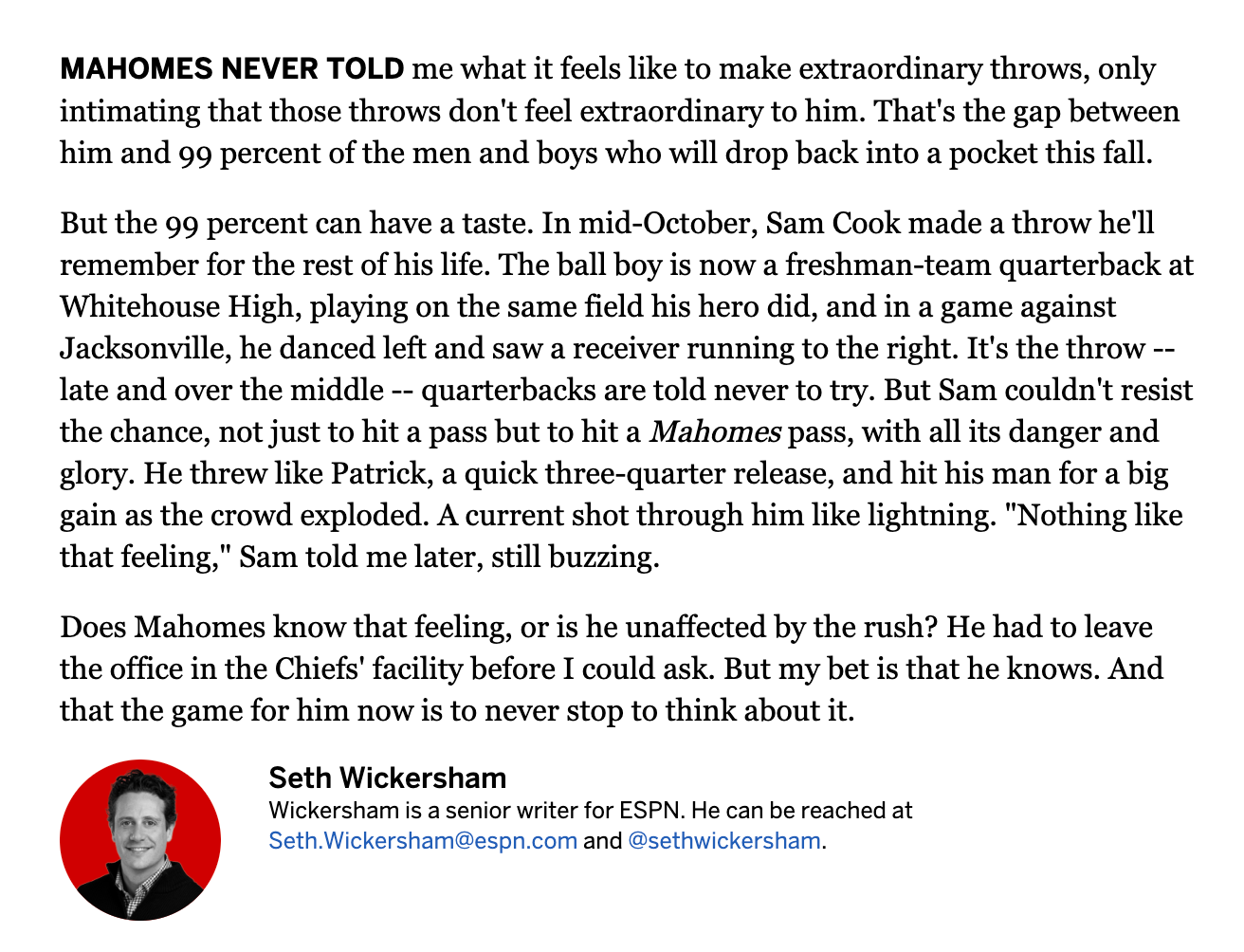
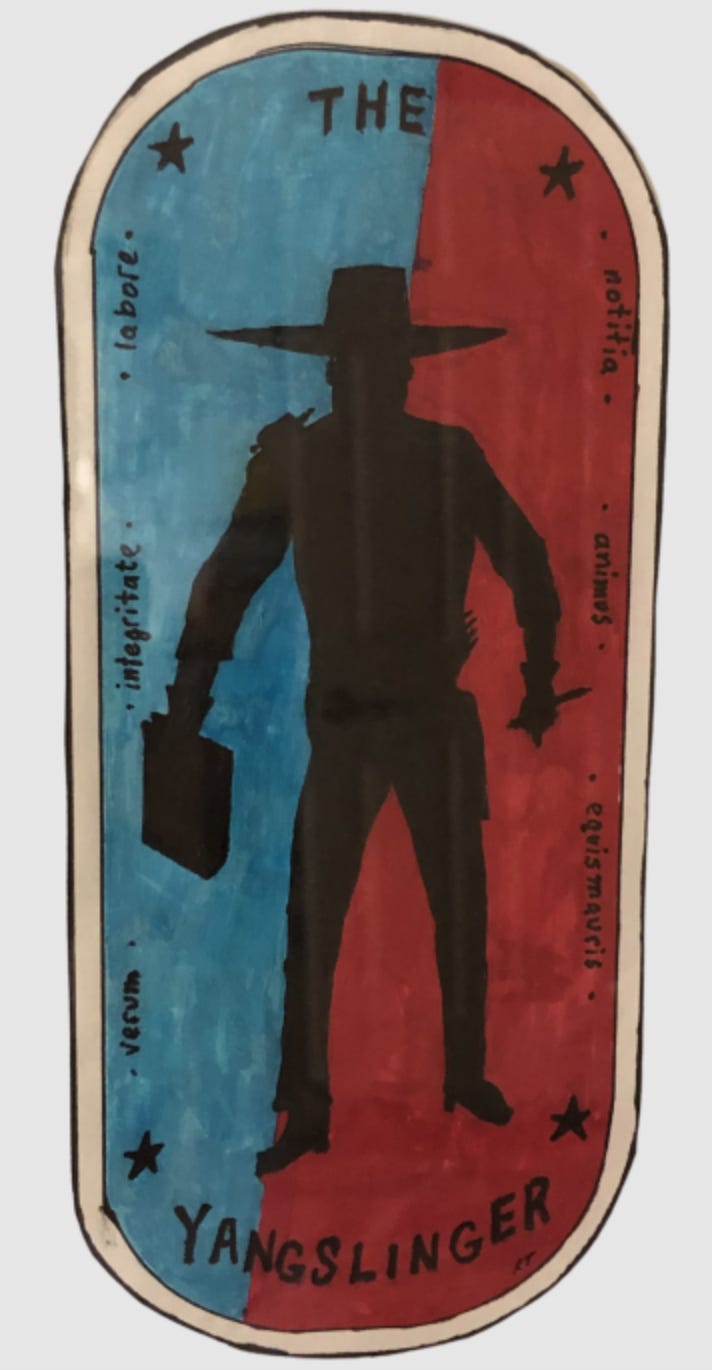



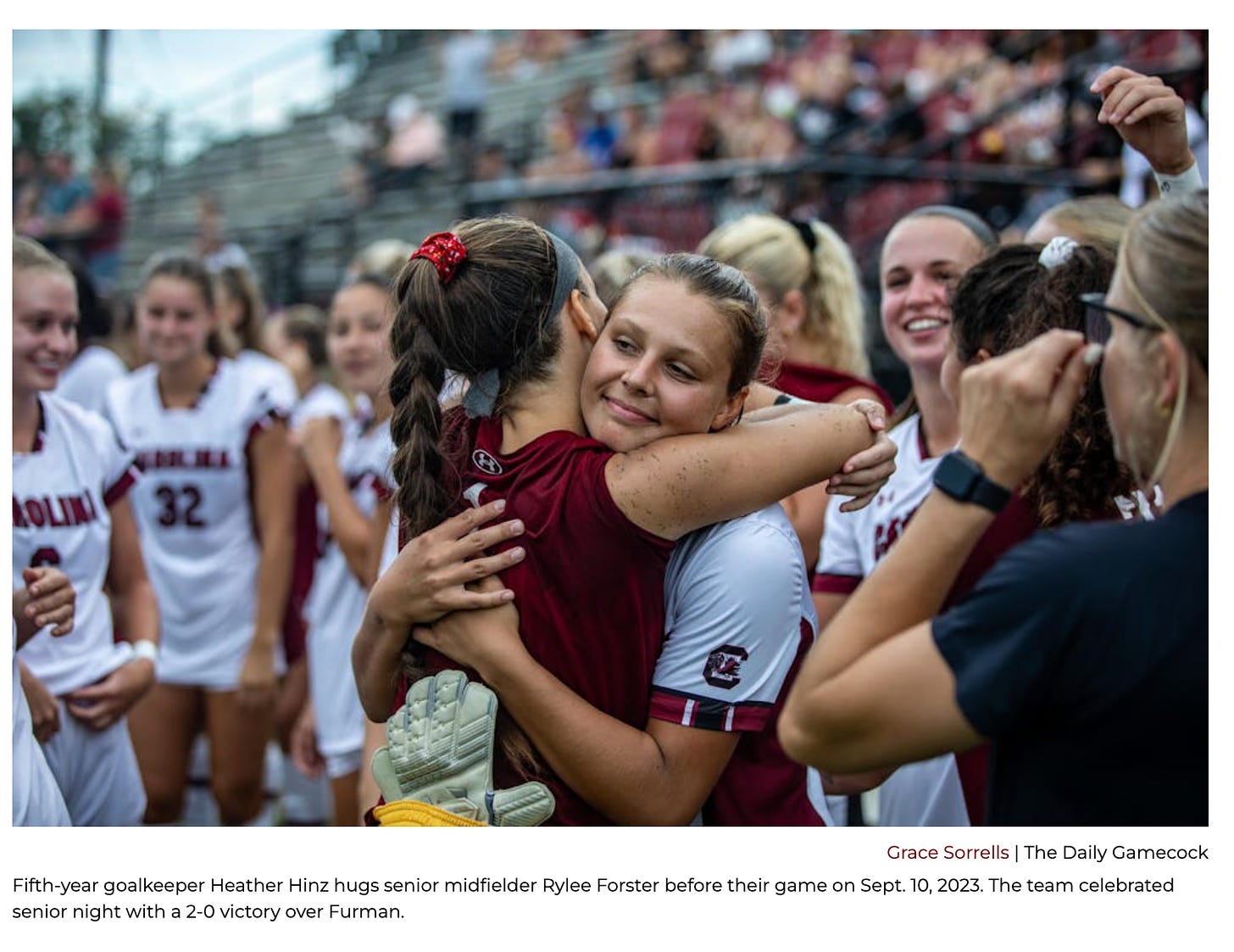




When it comes to racial justice, few companies have claimed to do so much while really doing so little as the NFL.
I never realized the importance of a good kicker until I, too, was fortunate to write in the SI family for a couple years (2011-13). I had a great editor named John Rolfe who really drummed that into me, the need for a good kicker. It helped me greatly as a writer.